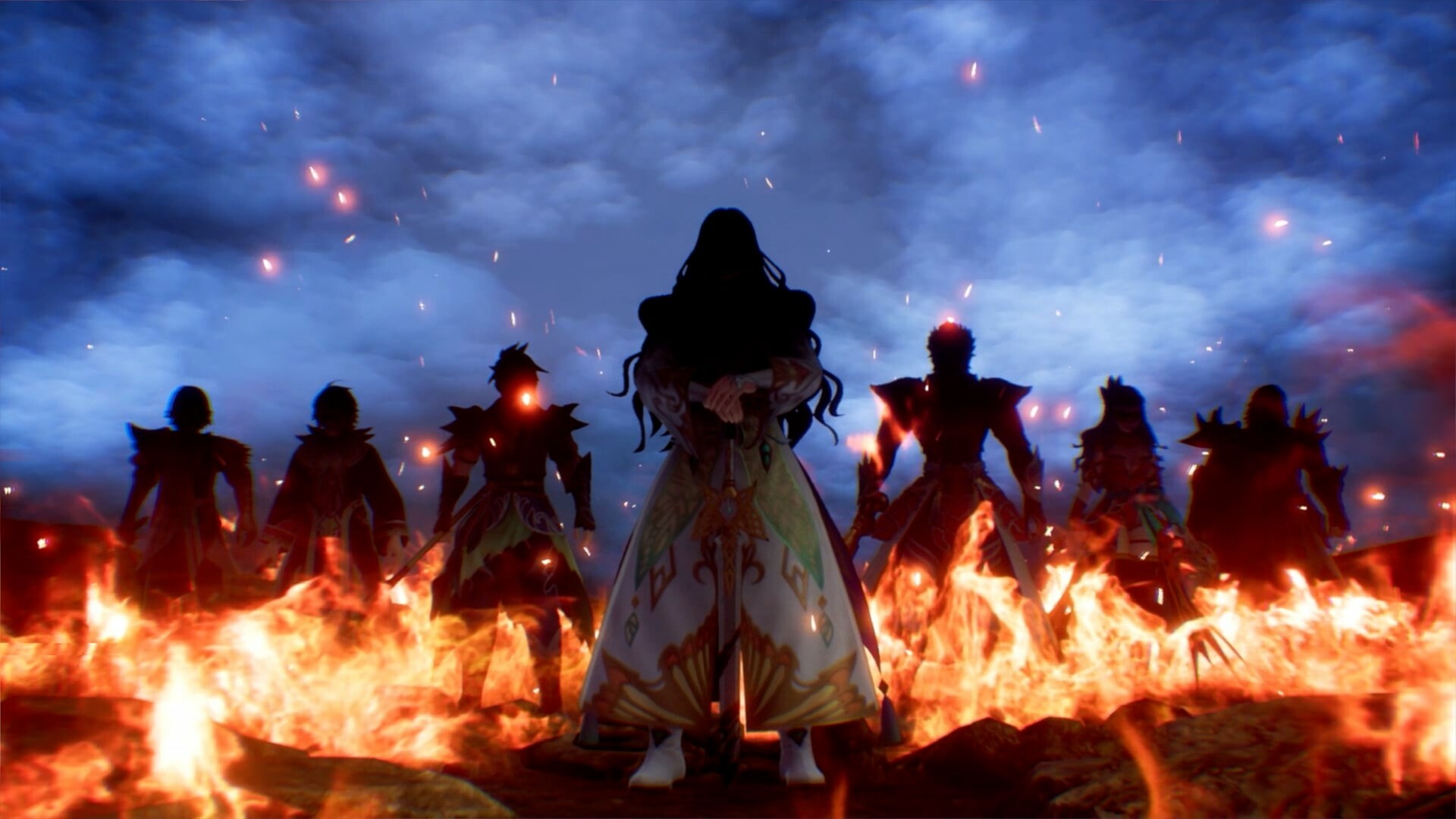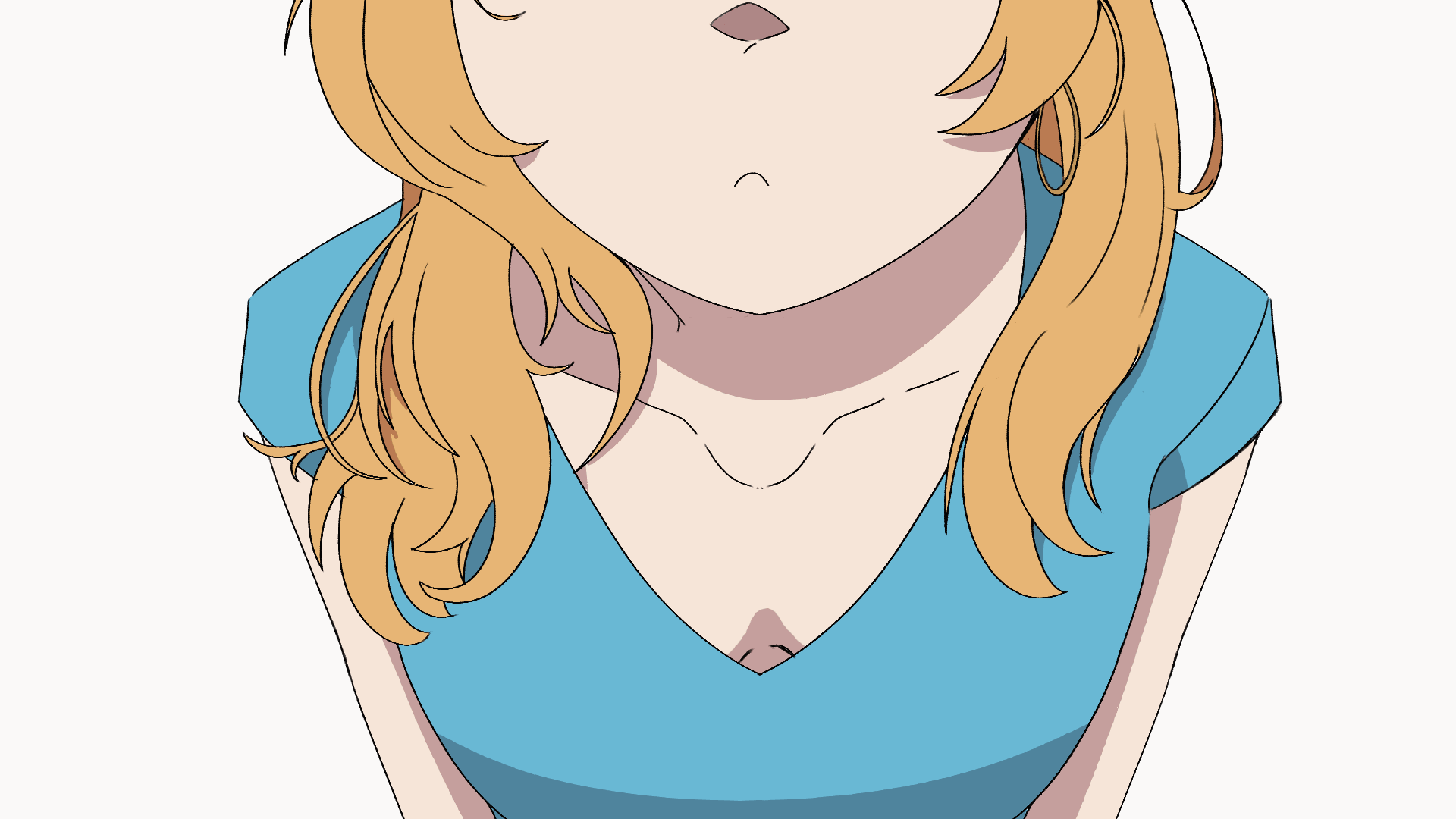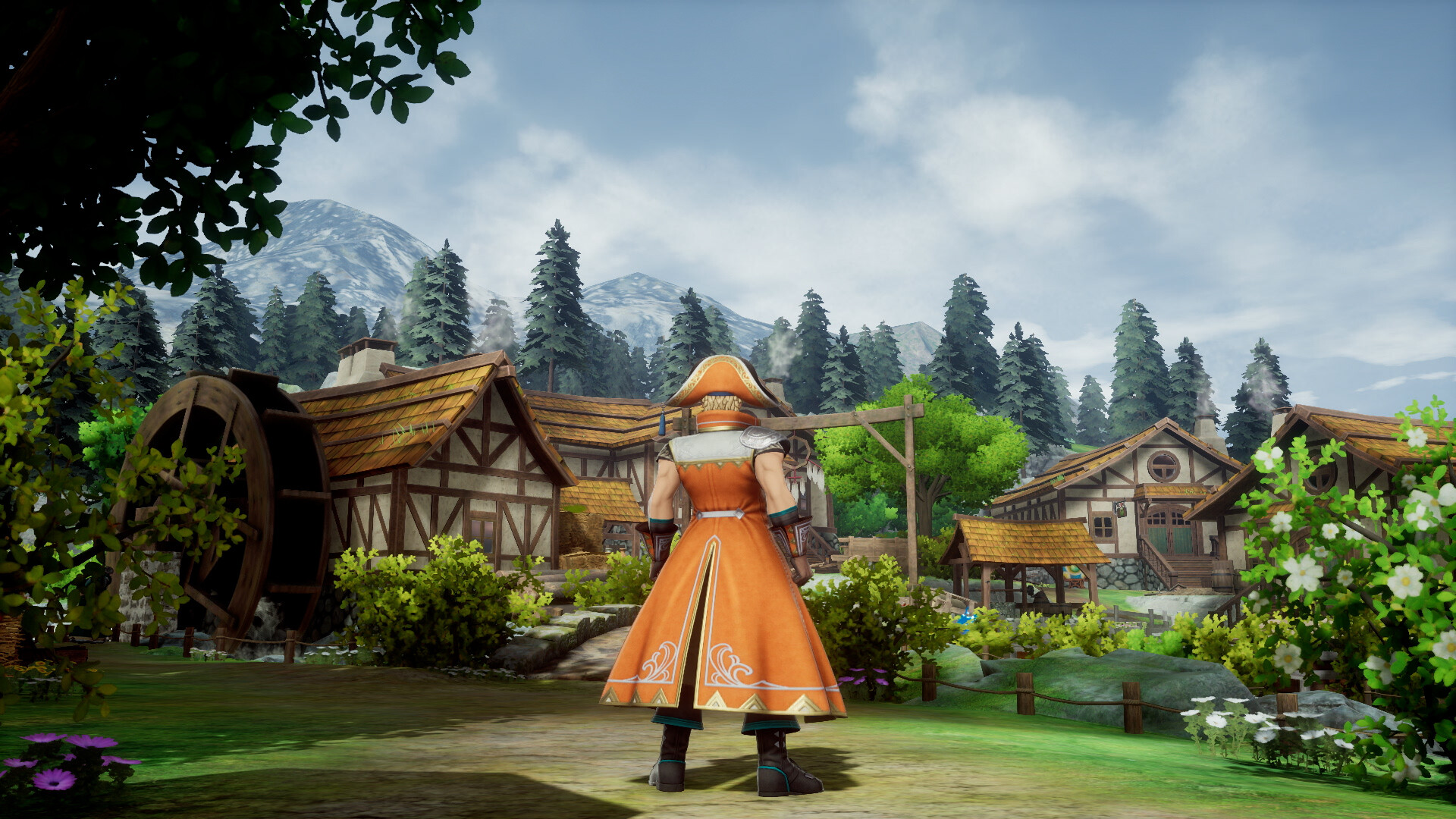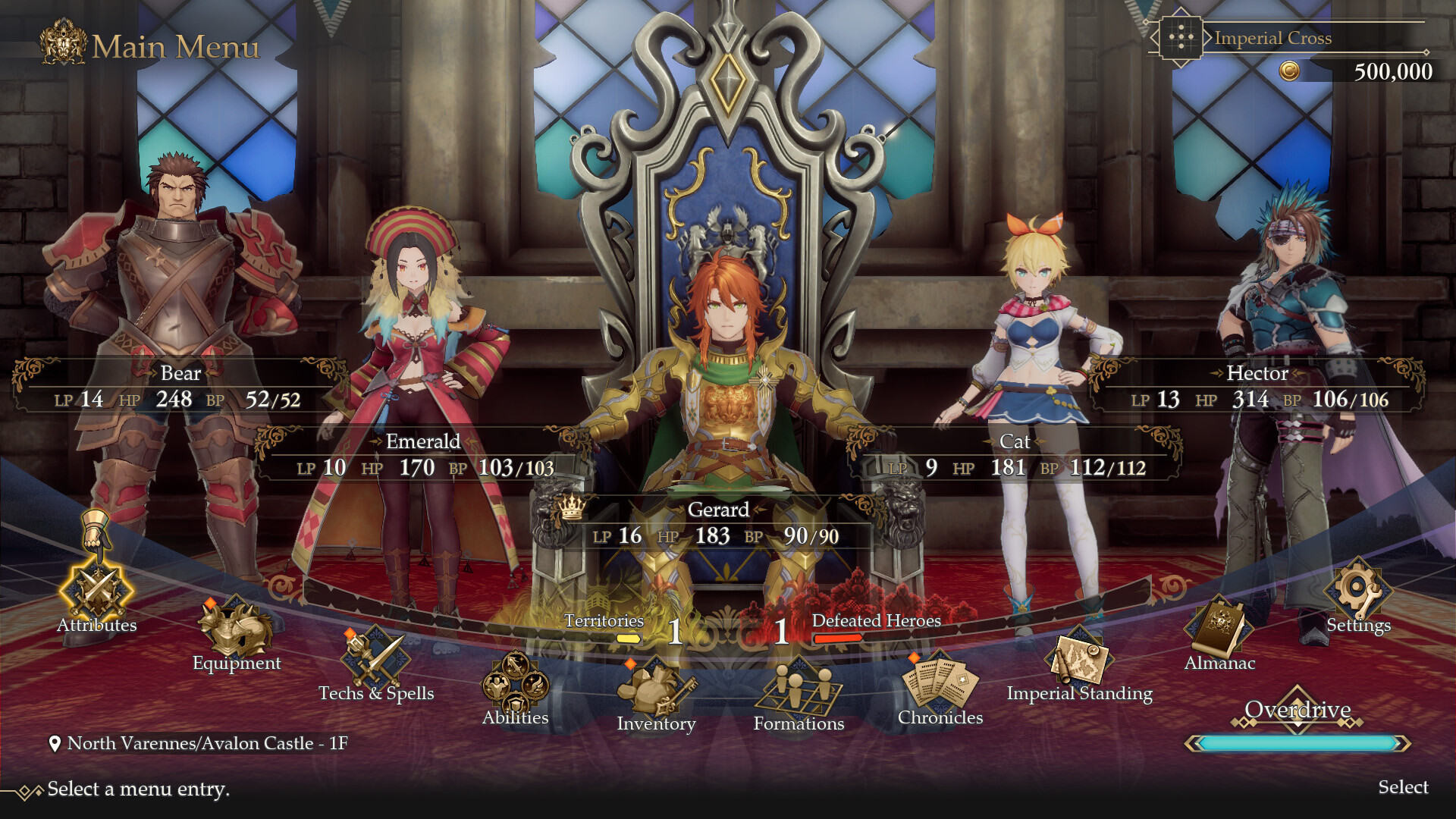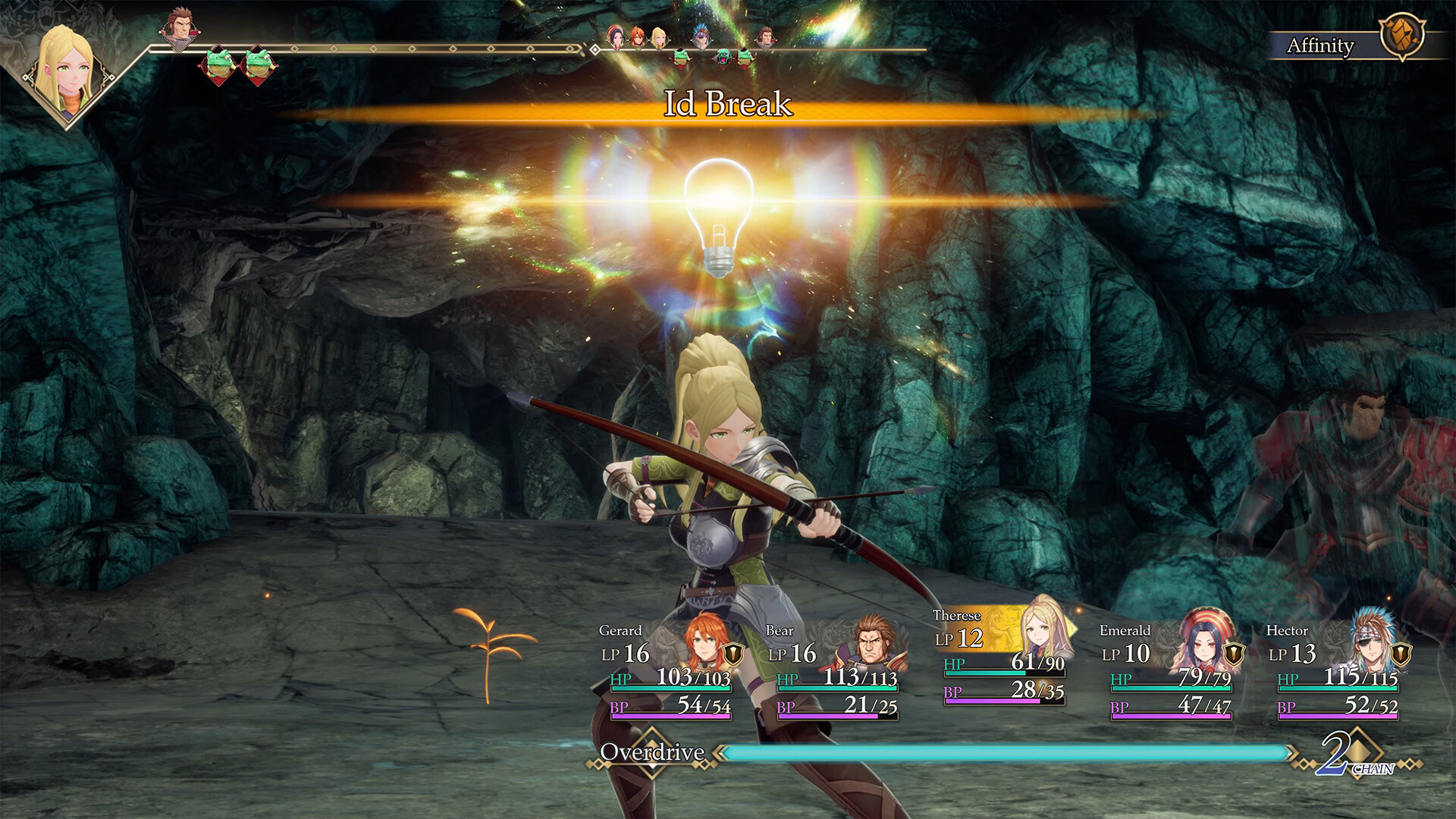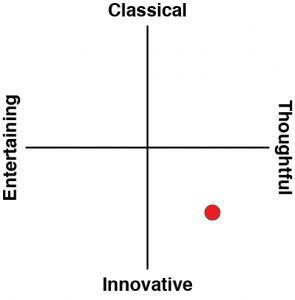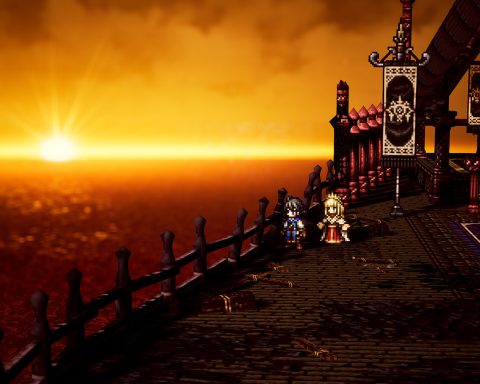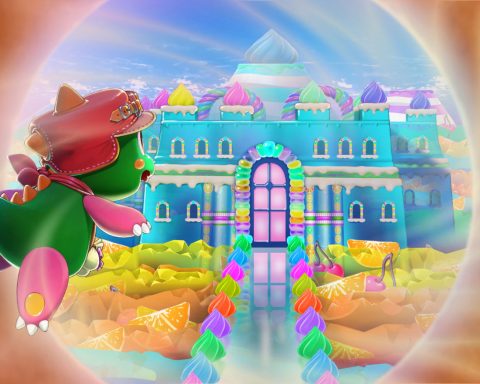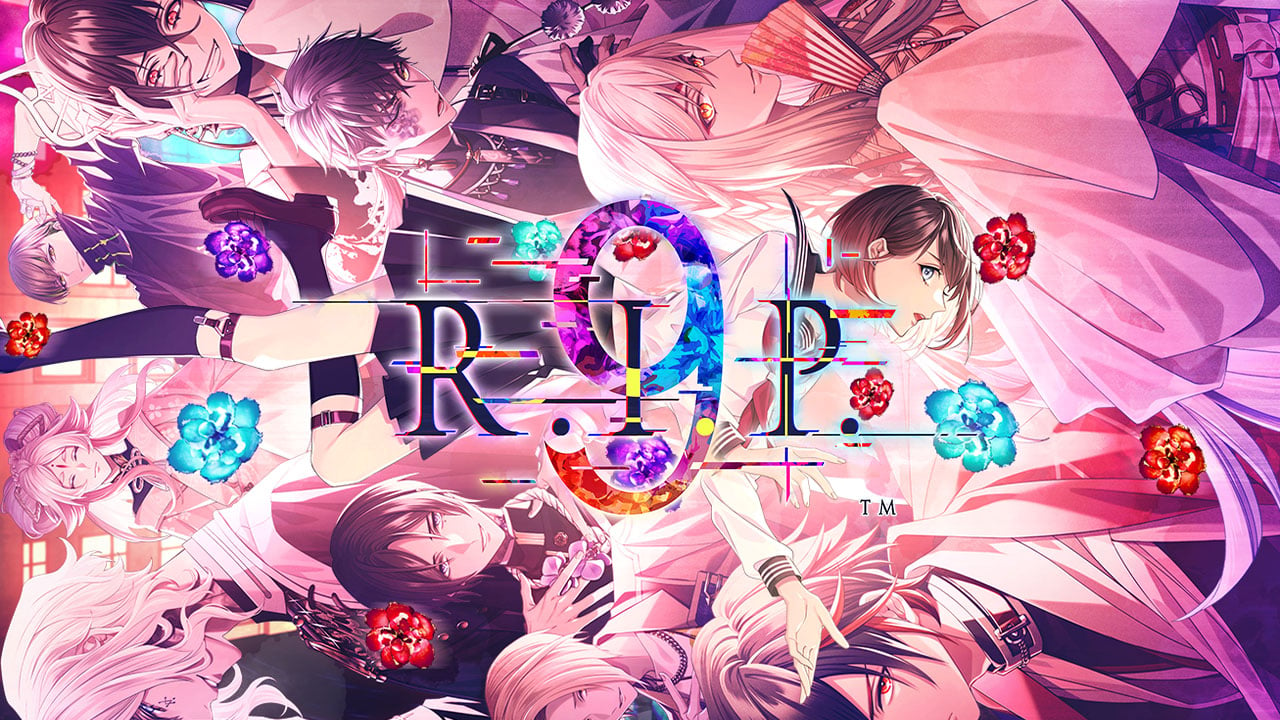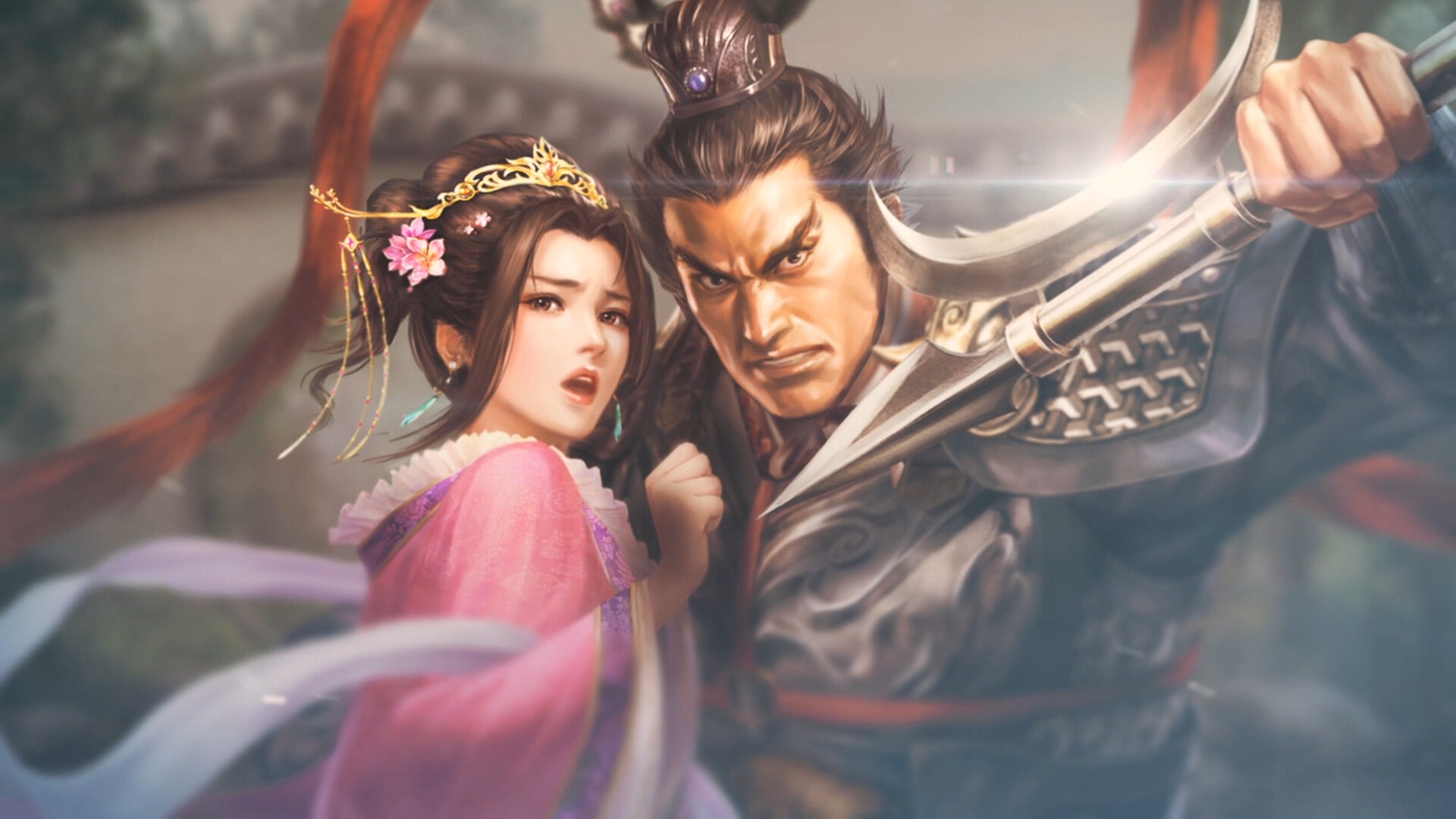There has already been a remake of Romancing SaGa 2. We have a review of it on DigitallyDownloaded.net and everything. But that was a relatively simple effort, in that the developers modernised the sprites and art so the SNES original was then in “HD,” and otherwise left it at that. Romancing SaGa 2: Revenge of the Seven, meanwhile, is a full remake effort. 3D graphics, additional narrative elements, voice acting… the works.
For one thing, it does look the part. In fact, if you didn’t know the long and storied history of SaGa, you’d assume that as this is Romancing SaGa 2, it must be a new spin and the first sequel to something that only released a few years ago.
What might surprise you is how Romancing SaGa 2 fits in with the rest of the SaGa series in recent years. Square Enix has been – to put it mildly – experimental with SaGa. SaGa Emerald Beyond, released just six months ago, could not be more different in tone and style to Romancing SaGa 2. Emerald Beyond is a cacophony of science fiction, modernity, warrior cats and pop-up book aesthetics for worldbuilding. SaGa 2 is a ye olde grande adventure of swords and sorcery, kingdoms, and knights in shining armour. Aside from the combat systems being somewhat alike, there’s nothing to superficially place these two games in the same franchise together, even though they’ve been effectively released back-to-back.
I don’t really have a preference and I love the unbound creativity of Emerald Beyond, but I also love the classical wonder of Romancing SaGa 2. Additionally, while I say the two aren’t comparable superficially, there is one theme that they do share in common: Both are enormously ambitious in their own way. With Romancing SaGa 2 that ambition comes through the dynasty mechanic. You start out the game playing as Leon, the king of a small empire. He doesn’t last long (that’s not a spoiler, it’s effectively the game’s tutorial) before Gerard, his son, is thrust into leadership.
The transfer from king to son is just the first instance of this, as you then find yourself following one generation after another on the way to the game’s final big boss, across a span of years and years of time. There are games that have tried to do dynasties and generations in the past, but Romancing SaGa 2 is perhaps the most ambitious of them all to this day. Other games have featured one or two new generations taking the mantle of “protagonist,” but Romancing SaGa features more than a half dozen of these baton-passing moments.
It looks glorious in the way it’s depicted in full 3D, too. As much as the original game tried to weave an epic tale of the biggest conflict the world will ever see, the expansive 3D perspective is your chance to actually see the world change, evolve and grow over the years. Where most JRPGs are a case of a journey across land (and perhaps space), Romancing SaGa 2 is an epic where the biggest journey happens through time.
As one generation’s hero dies, it’s possible to pass on the skills to their heir under the game’s much-lauded succession system. Mechanically it means that the new hero is able to fend off ever mightier threats. More philosophically there is a nice, albeit limited commentary in there about one of the greater strengths of humanity as a species being our ability to so effectively transfer knowledge so that as a species, we’re constantly and collectively building towards something greater.
Indeed, this was often thought of as a uniquely human capability, and something that explained our advantage over other animals (though it has since been discovered that corvids, and particularly the New Caledonian crow, also has the ability to pass knowledge on to subsequent generations). In ancient history the knowledge was passed on through storytelling and oral tradition – and there’s a nice nod to that with the story being opened with a bard sitting the local population down to weave for them the tale of the generational heroes. Now, of course, we do it through Google and hope that Elon Musk and Mark Zuckerberg don’t somehow break this critical capability with their disinformation and propaganda machines.
None of this is explored with as much detail as I would like in Romancing SaGa 2. It is, after all, a SNES-era game and while the developers have built on the cut-scenes to give them greater coherence, they haven’t suddenly turned the game into a work of philosophical theory. Nonetheless, it is a neat and fundamentally different theme that very few developers in the years since have tackled, so it comes across as fresh and invigorating in this remake.
The combat system, meanwhile, is as good as SaGa is at its best. Just like other entries in the series, there isn’t a traditional levelling system. Rather, characters get stronger based on how they fight – if they use the bow the most then they’ll get stronger with that and eventually unlock specialised skills that require bow mastery. Meanwhile, if you set up a character in the front row to act as a meat shield, said shield will toughen up faster than the delicate wizard you’ve hidden in the back row.
You need to be quite strategic in how you set this up, because the game has a habit of punishing players for making mistakes. Thankfully there are difficulty options in this remake – and I say “thankfully” because the original is notoriously challenging and unforgiving, even for experienced JRPG fans – but even when you play on the more casual difficulty, you’re still going to need to be alert, because enemies can still do a lot of damage, and in Romancing SaGa, death becomes very permanent, very quickly. Every character has a set number of life points, and it declines by one every time an enemy drops them. Once it hits zero, that’s game over for the character and no magic or items will bring them back.
The grand sum of the structure and intent behind Romancing SaGa 2 is that while the game does follow a linear path – the big bad boss at the end of the game is going to be the same each time – you do have a lot of control over how you get there. There are nearly countless different ways that you can develop different characters, pass the skills from one generation to the next, and develop the kingdom along the way. The replay value of Romancing SaGa 2 is incredible, and actually worth doing because it’s so much fun to toy around with and see how you can create different changes with each play through.
Square Enix picked an exceptional game to remake, and then did an exceptional job in remaking it. Romancing SaGa 2: Revenge of the Seven is a true epic and a game that comes across as ambitious to this day. While the raw storytelling is a little limited, the concept is strong and compelling, the combat system is tactical and entertaining, and bringing the game into three dimensions means that we can finally see the full scope and vision behind this adventure of generational consequence.
